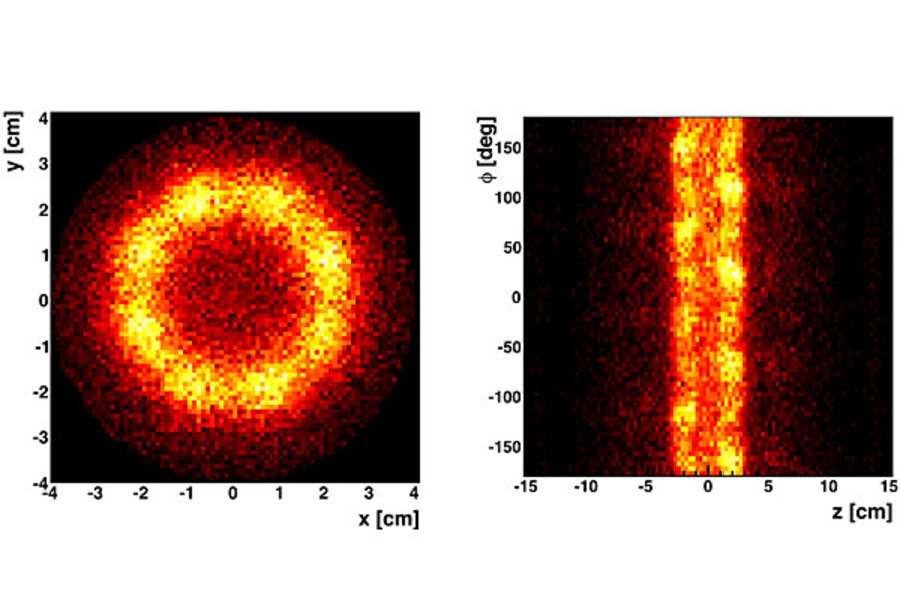Antimatter might fall up, say physicists
Loading...
Does antimatter fall up?
That's what particle physicists are asking after they reported their first direct measurements, published in the current issue of Nature Communications, of gravity's effects on the antimatter equivalent of hydrogen.
The measurements were taken at CERN, the huge particle physics laboratory on the French-Swiss border. CERN's Antihydrogen Laser Physics Apparatus, or ALPHA, captures positrons and antiprotons, which are just like regular electrons and protons except that they have opposite charges and quantum "spins," in a vacuum chamber where they combine to form antihydrogen.
When antimatter comes into contact with ordinary matter, the two obliterate each other in a flash of radiation and other subatomic smithereens (which is why we should all be grateful that Isaac Newton was never struck on the head by an antiapple). So, to get a good look at the antihydrogen before it vanishes, the ALPHA scientists trap it in a magnetic "bottle" that takes advantage of the antiatoms' magnetic properties to hold them in place.
The ALPHA team has actually gotten pretty good at confining antihydrogen: In 2011, they set a record by trapping the atoms for more than 16 minutes, an eternity for particle physics.
Now they're asking what happens after the magnets are turned off and the antihydrogen is released. Does it fall down or up?
Sadly, the measurements were inconclusive. The antihydrogen atoms have proven too squirrely and the ALPHA equipment too imprecise to give a definitive answer.
“This is the first word, not the last,” said Joel Fajans, a University of California at Berkeley physicist and ALPHA team member, in a UC Berkeley press release. “We’ve taken the first steps toward a direct experimental test of questions physicists and nonphysicists have been wondering about for more than 50 years. We certainly expect antimatter to fall down, but just maybe we will be surprised.”
If antimatter were to fall up, it could help explain one physics' greatest mysteries, namely, why the universe seems to contain so much matter – such as stars, planets, belly-button lint and so on – and so little antimatter, which, as far as we know, exists only as products of radioactive decay, exploding stars, and very strong electric fields.
According to the standard model of particle physics, the universe should have the same amount of matter and antimatter. "Have had" actually, because, if at the time of the Big Bang there were equal amounts of matter and antimatter, the two would have annihilated each other in short order, leaving only photons.
Because we're here, physicists suspect that this didn't happen. But nobody really knows why.
If antimatter falls up though, then the prevalence of matter over antimatter might make sense. As CERN physicist Dragan Slavkov Hajdukovic argued in a 2011 paper, a cosmos in which matter and antimatter repel each other would experience a series of expansions and contractions – Big Bangs and Big Crunches, if you will – with each successive universe cycling between being dominated by matter and antimatter. Under this model, our present-day universe is mostly matter because the previous one was mostly antimatter. (Residents of that universe probably just called it matter.)
Elsewhere Hajdukovic argued that gravitantionally repulsive antimatter does away with the need to posit the existence of dark matter, thus resolving one of physics' other big mysteries.
So when will we find out if antimatter falls up? ALPHA is currently being upgraded and will reopen in 2014, and physicists hope to find out after that.
If antimatter is indeed antigravity, we would need to revise quite a bit of current physics. But then again, current physics can't explain where half of our universe went, so perhaps a revision is just what we need.






